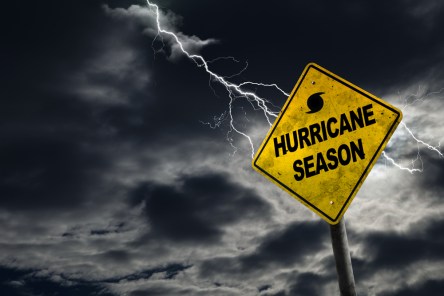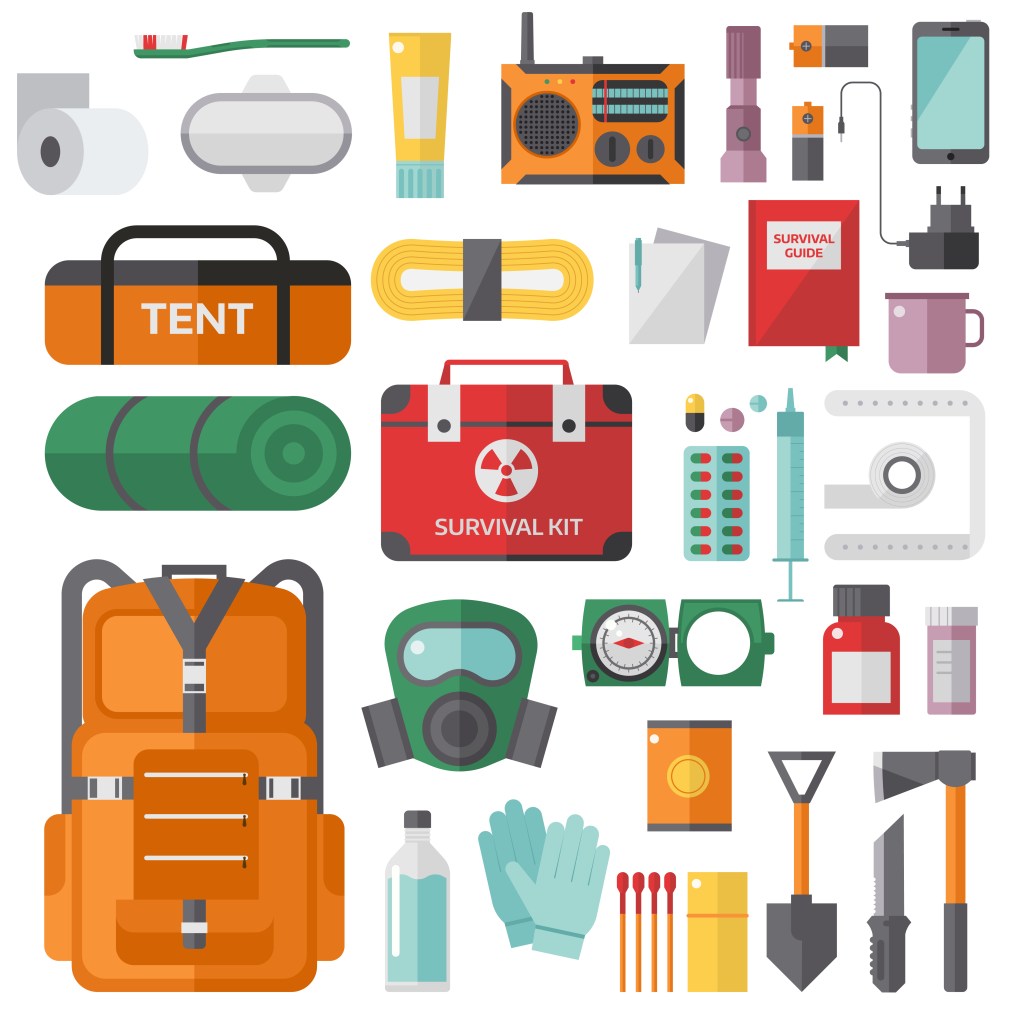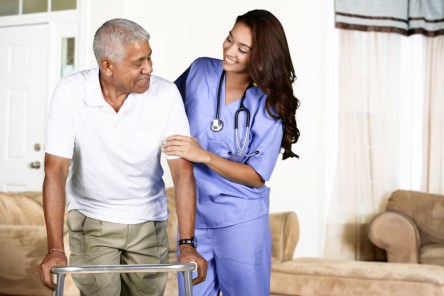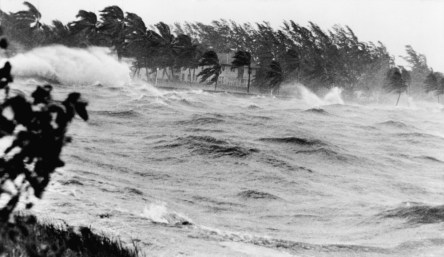Hurricane season is here! Even if you have a previously existing plan, it’s worth updating it with new resources for staff and residents. Check out these suggestions for thorough hurricane preparedness for senior living communities. Post evacuation plans in large print Ensure that building evacuation plans are clearly posted, in large print and with large graphics, on each floor of each building. It may also be helpful to email residents and their loved ones a copy of the city evacuation routes. Though they may not read it immediately, they will have it as a references when the time approaches. Prepare the property Make sure that gutters and downspouts are cleared for the best water management possible. Trim back trees and shrubs, particularly branches that are already weak or worrisome, to minimize property damage and projectiles. If residents are not required to completely vacate the property, ensure that there is an adequate store of plywood, nails, and other materials that can help maintenance fortify windows leading to units and public spaces. Honor staff efforts Create a way to honor staff that excel during times of crisis. Let them know that their efforts are appreciated by residents and leadership within the company. The Argentum Hero Award, for example, was given to Lisa Thomas for her work during Hurricane Harvey. Thomas is a life enrichment coordinator at Sabine Place, an Enlivant community in Orange, Texas. When the storm forced an evacuation of her community and several relocations as a result, Thomas made the most of the situation and left a lasting legacy at many of Enlivant’s sister communities during temporary stays. Residents: Create personal support networks The American Red Cross recommends that seniors create a personal support network. This network consists of multiple people who will check...
Ready For Anything
Emergency Disaster Prep
How well a business manages a natural disaster or other emergency depends on its degree of readiness before, during and after the event. There is no way to guarantee that your workplace will never have to deal with a natural or man-made disasters, but by being prepared and communicating effectively employees can stay calm and get through it in good shape. Even with good plans in place, it’s important to have the right products on hand to ensure your employees and business are safe. Staples, offers some tips on equipping your business for an emergency: Purchase the basics (and then some). This includes everything from fire extinguishers, emergency preparedness kits, long-term shelf life water and food, crank-powered cell phone chargers, emergency lighting (flashlights, lanterns and glow sticks, for example), extra batteries, blankets and exit signs. Order the appropriate personal protective equipment. If employees work with potentially hazardous materials, you need to provide the right kind of protection for them, such as gloves, helmets, and respiratory protection. When PPE is used properly, it can dramatically reduce the risk of injury on the job. Stop injuries before they happen. Slips and falls are major causes for concern in a facility, so being aware of how to prevent them will help avoid dangerous injuries. This includes purchasing items like the right cleanup equipment, floor mats and carpets, and even signage for wet floors or slippery areas. Make sure the safety supplies you order are Occupational Safety and Health Administration (OSHA)-compliant. Your specific business needs may vary, but safety standards don’t, so make sure everything you’re purchasing is up-to-date and safe to use. Products available from Yardi Marketplace™ can help your staff prepare for, respond to and recover from emergencies and natural disasters. Get your property ready...
Weather Preparedness
Senior Living Industry Focus
One nerve-wracking decision many facility administrators face during an emergency is whether to keep residents on site, or begin evacuations. When both options appear equally risky, it helps to take stock of the current locale and determine whether you have the necessary resources to provide adequate care for your residents. Make sure the facility’s security has not been compromised, and that backup power supplies are functioning properly. Review supplies, inventory medications, and make an account of all medical equipment. Survey staff to make sure you have enough hands on deck to meet all resident needs. Finally, consult with local agencies, including fire and police, to determine whether it is safer to stay or go. In some cases, the safest course of action is to transport residents and staff to another location. It is essential to establish in advance how relocation will be coordinated. Prioritize resident evacuation so that those with special needs can receive adequate medical attention during the move. Keep your list of relocation sites regularly updated, including transportation routes and contact information for ambulance and security services. Equally important is providing alternative transportation for offsite staff in the event an emergency restricts public transportation. Teri Marinko, senior vice president of customer engagement at Boston-based Benchmark Senior Living faced just that situation during the Boston Marathon Bombing when the city shut down public transit. As she told Caring.com, the takeaway lesson was clear, “During an emergency, it’s particularly important to make sure there is a plan to transport staff to the facility.” Keeping Contact It’s always a good idea to make the residents and their family aware of your safety procedures so that during times of crisis everyone understands what’s happening and how to make contact or gather additional information about residents. Mitigate...
Hurricane Season
Prepping Your Residents
Hurricane season is upon us, and it will linger until the end of November. Fortunately for the continental US, the storms seem to have forgotten their curtain call! It’s unlikely that their delay will last forever, though. Use this downtime to make sure that your residents are prepared for nature’s fury. Make hurricane preparedness fun! While written information is helpful, it’s unlikely that residents will read it thoroughly and commit it to memory. What they will remember is a fun game night. Consider hosting a trivia night (one for families and a separate event for adults if your budget can swing it). Games make life-saving lessons memorable and prizes are a good incentive that boosts participation. Think of your prizes as an opportunity. Practical prizes can be fun if they look cool enough. A roll of duct tape is always helpful but it has zero aesthetic appeal, right? A snazzy water bottle with built-in filter, rugged multitool, and a cleverly designed LED flashlight are more eye-catching and still useful. The grand prize could include a complete preparedness kit, which has significant monetary value and can also save lives. Bonus: such utilitarian expenses are more easily approved by your controller. Get creative! Post evacuation plans. Make sure that building evacuation plans are clearly posted on each floor of each building. Also consider emailing residents a copy of the city evacuation routes. It’s unlikely that they will bother looking at it when you send it, but they may just save it for future references. Danger begins with the surge. Think projectiles and high winds are a hurricane’s greatest threats? Guess again. Storm surges take more lives than winds and debris. A storm surge can exceed 20 feet. That’s a wall of water two stories high; most...
Hurricane Season
Property Protection
With hurricane season in full swing on both coasts, we can all benefit from a refresher on hurricane preparedness for properties and residents. According to the National Weather Service, last year was relatively calm for hurricanes and tropical storms with property damages totaling just over $10 million. That’s a significant amount yet pales in comparison to $172 million in damages in 2012 and billions in recovery costs. Even the most basic planning can prevent costly property damage as well as injury and loss of life. Community safety tips Make sure that employees and residents are familiar with building-specific and community evacuation routes. It’s difficult to host community drills, so a push notification delivered via smartphone, article in the monthly newsletter, or social media post may draw the most attention. In high rise buildings, it is conventional knowledge to evacuate residents to lower floors, where wind conditions are more favorable. But be mindful of flood levels, informing residents to congregate on the appropriate floor that is above threat of water damage and below the worst wind. Interior rooms with fewer windows are favorable to exterior rooms. Keep shrubs and hedges trimmed. Top-heavy plants have a parachute effect in high winds. Keeping them trimmed low can minimize their ability to take flight. Call professional arborists to remove damaged or decaying limbs from trees even if they are not directly over buildings. Branches and limbs are projectiles during hurricanes, increasing the likelihood of injuries and damages. Close the pool and bring in any accessories and patio furniture that are not bolted down. In addition to regular wear and tear during storms, these items may become dangerous projectiles. Ensure that gutters and clean and repaired, especially as fall leaves become more plentiful. A simple clog can exacerbate flooding....





